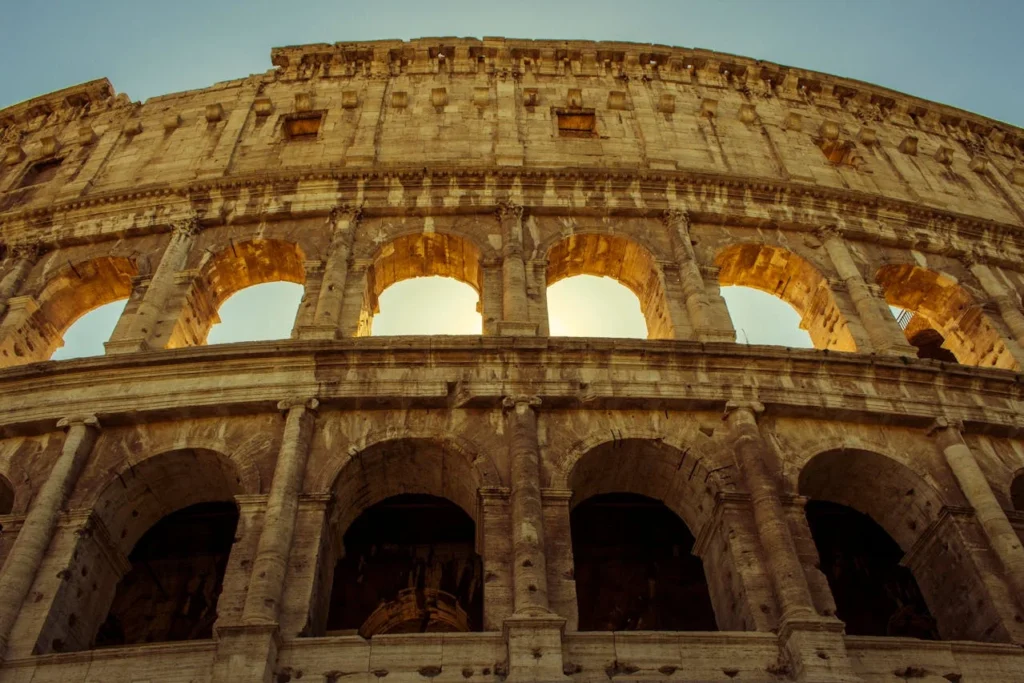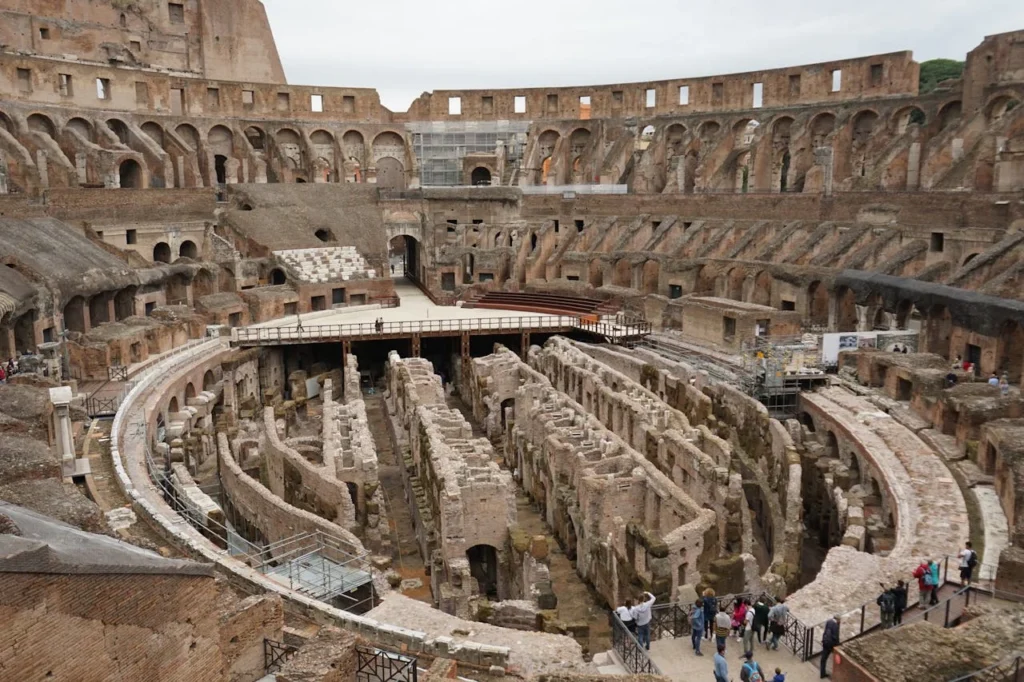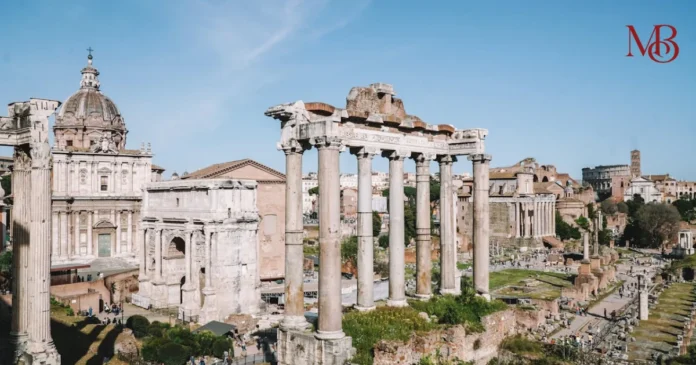What happened to Rome after fall of Empire? Did Rome Disappear? It’s a question I once asked myself standing before the crumbling grandeur of the Colosseum, that ancient amphitheatre bathed in golden twilight. All around me were the echoes of a mighty civilisation. But where were the Romans? Not just the statues, not just the ruins, where was the heartbeat of that great empire?

What happens to a city when its world ends?
Rome didn’t fall in a single night. But when the Western Roman Empire finally crumbled in 476 AD, something seismic shifted, not just politically, but culturally, emotionally,and spiritually. It’s like waking up after a storm and realizing your house still stands, but your neighborhood is gone.
And yet… Rome endured. And in its endurance, it became something else, something deeply human, resilient, and utterly timeless.
From Empire to Emptiness: The First Breath After Collapse
Let’s rewind a little.
The fall of the Western Roman Empire wasn’t a theatrical crash but a slow, exhausting decay. Corruption, economic crisis, invasions from Germanic tribes, and the splitting of the empire into East and West these all played their roles. In 476 AD, the Germanic chieftain Odoacer deposed the boy emperor Romulus Augustulus, and just like that, the Western Empire was declared… finished.
You’d expect the city to empty out, right? Fires, looting, people fleeing?
But that’s the thing. Life didn’t stop.
Rome, stripped of its imperial power, didn’t vanish. Instead, it started to evolve. Think of it as an aging monarch stepping into civilian clothes,not as majestic, but perhaps more real, more grounded.

A City of Ghosts, Saints, and Survivors
After the fall, the city entered what many historians call the Early Middle Ages, or less flatteringly, the Dark Ages. There was chaos, yes. Trade routes disintegrated. Sanitation systems failed. The population plummeted,from over a million during the empire’s peak to perhaps just 30,000.
Can you imagine that? Streets once filled with senators and soldiers, now quiet except for the shuffling of monks and farmers?
But here’s the miracle: amidst the ruins, something sacred took root.
Christianity, which had once been a persecuted religion in the empire, now rose as Rome’s spiritual lifeblood. The Church, with the Pope as its shepherd, began to wield immense influence,not through armies, but through belief. The Roman Forum may have fallen silent, but new hymns filled the air.
Rome wasn’t dead. It had just shifted its center of gravity,from emperors to bishops, from marble palaces to candle-lit chapels.

The Silent Builders: How the Romans Reclaimed Their Soul
One of the most poetic things about Rome post-empire is how its people reused their past,not just metaphorically, but quite literally.
Abandoned temples were stripped of marble to build churches. Pagan statues were quietly renamed as Christian saints. The old roads still guided travelers. And Latin, the language of Caesars, now became the language of prayer.
It’s like watching someone pick up broken pottery and craft a new mosaic from it. Maybe not as shiny, maybe uneven, but achingly beautiful.
People lived among ruins, not just in spite of them but with a kind of reverence. To this day, modern Romans call their city la città eterna,the eternal city,not because it’s perfect, but because it never truly gives up.
Cultural Bridges: Rome Between Two Worlds
Here’s something you might not expect,Rome, even in its decline, became a bridge.
While the Western Empire collapsed, the Eastern Roman Empire,better known as Byzantium,thrived in Constantinople. Letters, artifacts, and influences continued to travel. The Pope remained in contact with Byzantine emperors. Roman law, art, and architecture didn’t die,they migrated, evolved, reappeared across Europe.
Even in India, traces of Rome reached far and wide. Roman coins have been found in Tamil Nadu. Spices, silks, and ivory from the subcontinent were once prized in Roman markets. That connection, though weakened, never vanished.
Rome, post-empire, still whispered across continents. Not as a conqueror, but as a storyteller.
Read More: When Rome Reached India: Rediscovering an Ancient Global Connection
Sensory Echoes: Walking Through the Aftermath
Picture this: a Roman woman in the 6th century, filling her water jug at a cracked aqueduct. Her sandals kick up dust on a road once trodden by generals. She passes a church built into the bones of a temple. She prays in Latin, though she doesn’t know it was once the language of emperors.
Isn’t that hauntingly beautiful?
Or imagine a candle flickering inside St. Peter’s Basilica, the scent of incense curling through the air. Outside, wild grass grows around toppled columns. Inside, faith holds the city together like mortar in stone.
Even today, walking through Rome is like moving through layers of history. Every corner whispers stories,of survival, of transformation, of pride that defies time.
Quick Cultural Facts: What You Might Not Know About Post-Empire Rome
- Rome didn’t fall, it transformed: The fall of the Western Empire marked political change, but cultural life endured.
- The population dropped dramatically: From 1 million at its peak to around 30,000 during the early Middle Ages.
- The Pope became Rome’s central figure: The Church took over many civil and social functions once held by the imperial government.
- Recycled architecture was common: Stones from old Roman buildings were repurposed in churches and homes.
- Rome remained a pilgrimage site: Despite its decline, pilgrims continued to travel to Rome for spiritual reasons.
So, What Can We Learn from Post-Empire Rome?
We often think of collapse as the end. But Rome teaches us otherwise.
It shows us that greatness isn’t about power,it’s about endurance. About transforming pain into purpose. About letting go of old identities to embrace new ones.
Isn’t that something we all do at some point in our lives?
Rome didn’t just survive; it redefined what it meant to be Roman. It carried forward the soul of a civilization through faith, community, and memory.
And perhaps that’s why Rome still feels alive today. Because even after its fall, it chose to rebuild,not just in brick, but in spirit.
You might also like: 10 Strange Traditions Around the World
In the End, Rome is All of Us
There’s something universal about Rome’s story. It speaks to anyone who has faced loss, change, or reinvention. It reminds us that even the most powerful things can fall,and still find a way to rise.
Rome after the fall wasn’t lesser. It was simply different. Wiser. More soulful.
And maybe that’s the kind of legacy that matters most.
Frequently Asked Questions (FAQs): What Happened to Rome After the Fall of the Empire?
1. Did Rome become abandoned after the empire fell?
Not entirely. While the population declined sharply, a community remained, sustained by agriculture and the Church.
2. Who ruled Rome after the fall of the Western Empire?
Initially, Germanic rulers like Odoacer took power, but over time, the Pope and the Church became central authorities in the city.
3. Was the Eastern Roman (Byzantine) Empire affected?
Not immediately. The Byzantine Empire continued for nearly 1,000 more years, often interacting with Rome culturally and politically.
4. What happened to Roman architecture and buildings?
Many were reused. Temples became churches, and materials were repurposed in new construction.
5. Why is Rome still considered the “Eternal City”?
Because of its enduring cultural, spiritual, and historical influence through the centuries, even beyond the fall of its empire.


